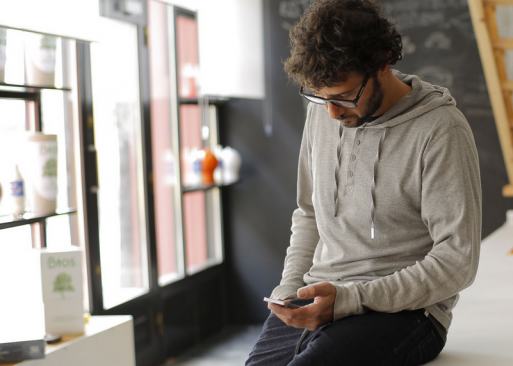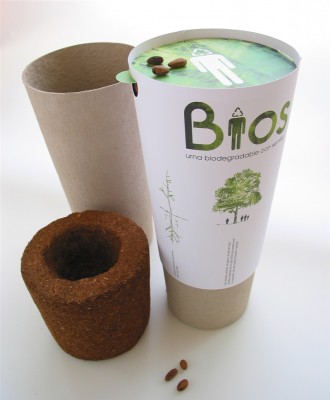Estudimoline is the Spain-based design studio whose seasoned offspring, the company Bios Urn, is helping individuals create environmentally friendlier end-of-life plans. In short, Bios Urn takes the cremated remains of a person (or a pet) and, rather than perch them on a fireplace mantle, turns them into a tree. Today, Bios Urn has convinced “more than 7,000 people the world over, with more than 28 distributors in several countries, such as the United States, South Africa and Europe” to opt for their “green” urn.
“The Bios Urn project reintroduces the human being to the natural circle of life. It is the profane ritual of regeneration and the return to nature. Bios is a mortuary urn made from biodegradable materials: coconut shell, compacted peat and cellulose.
Inside it contains the seed of a tree. Once the urn is planted, the seed germinates and begins to grow. The seed can be changed for a different type of seed or plant more adequate to the chosen planting place, if need be.”
–Bios Urn
Designer Gerard Moliné envisioned Bios Urn in 1997, and it was not until 2002 that the urns finally came to fruition. The company, which has since recruited designer Roger Moliné, now boasts accolades and awards from around the world, and was even a top nominee for the INDEX Award in 2005.
Here is the product’s breakdown: Firstly, the buyer has a choice between a “biodegradably friendly” urn for a pet or human. The ashes of your loved one are placed in the upper compartment of the urn (which looks a bit like a giant Starbucks cup). After the vessel is planted (about five centimeters from the surface is recommended), the components are then “mixed in the capsule, adding soil from the site where [one is] going to plant the urn,” then, “the seed [is planted] in the upper capsule.” Tree options include Pine, Gingko, Maple and multiple others.
Today, there are a mounting number of end-of-life options like Bios Urn — but their products do not all share exactly the same inspiration. For some, it’s a question of finding a more personalized end-of-life option, while for others (like Bios Urn) it’s about giving back to the planet after we’re gone. “It is innovative,” says their site, “it is discrete…it is aesthetic” and it is “designed for our well-being”.
Why would (or wouldn’t) you choose a biodegradable urn? We look forward to your comments below.

 Bios Urn: The Biodegradable End-of-Life Option
Bios Urn: The Biodegradable End-of-Life Option





 First the Wealth Gap, Now the U.S. Has a Growing Health Gap
First the Wealth Gap, Now the U.S. Has a Growing Health Gap
 How to Comfort A Dying Loved One
How to Comfort A Dying Loved One
 Our Annual Seven Holiday Gifts for Someone Who Is Grieving, 2024 Edition
Our Annual Seven Holiday Gifts for Someone Who Is Grieving, 2024 Edition














